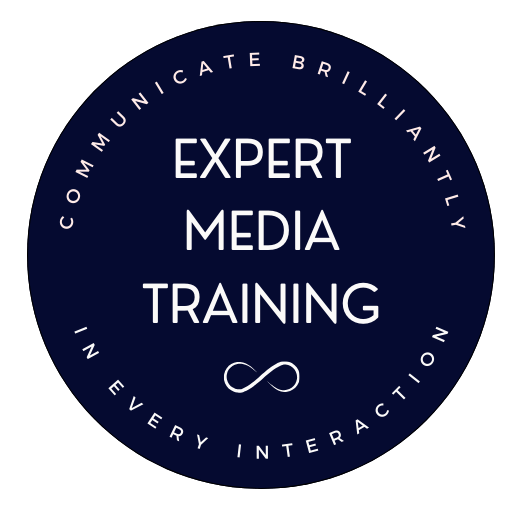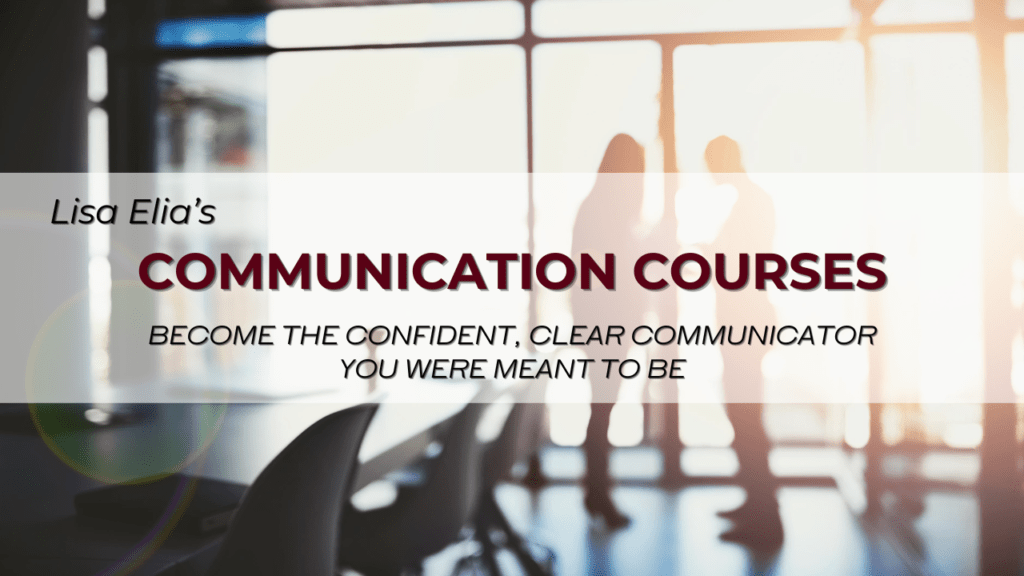Thursday, April 4, 2013 | Business Tips
If you want to change your business quickly, quickly change some of the things you’re doing.
Business growth tip # 1:
Look for the hidden gems — products or services you can create easily or re-purpose.
- Most business owners and executives overlook some of the very valuable services they could provide because they take their own knowledge for granted and, possibly, assume that “everyone knows that.”
- Product-based companies can usually find new uses for their products or they can tweak them slightly to re-position them.
- If you look at your current offerings and listen to what your customers/clients ask you for or praise you for, you will probably get some ideas for new products or services to add to your offering.
- Don’t be afraid of a product that has a short shelf life if you can flood the market and achieve a high ROI. Not everything is meant to last forever.
Business growth tip # 2:
Conduct a monthly “awareness audit,” and amplify your presence.

Look at all of the places where you could easily let people know more about your products and services, add-ons and more. See if you could do more with:
- The signature on your invoices
- Every page of your web site (Is there a call to action on each?)
- Your social media profiles and posts
- If you have a physical location, your signage and waiting area
- Your outgoing voice mail message or hold music/message
Business growth tip # 3:
Create specific plans of action to meet the following groups of people and to make them aware of you:
- Opinion Leaders: these are the people others look to as trendsetters, style leaders, and authorities.
- Key Influencers: these are the people who are close to your target customers and who have the power to influence their buying decisions.
- Members of the media who could interview you.
- Speaking bookers or event organizers who could invite you to speak to members of your target audience.
If you focus on getting to know as few as 10 members of each of these groups each month, imagine how much more widely known you would be and how much potential new business you could be getting.
By reaching out in the right way, you could also secure press coverage and speaking engagements, which can bring you more business and visibility.
Here’s one way you can challenge yourself. Choose one of these strategies to focus on each week, over the next three weeks. Then, track any changes that occur in your business during that time and over the next three weeks.
Feel free to share your experience below or on my Facebook page: www.facebook.com/expertmediatraining
I’d love to hear from you.
Now that you have some business growth tactics, do you need tips and advice on media training and presentation training? Check out these links:
Top 5 Mistakes to Avoid in Media Interviews
Top 10 Media Relations Tips – Media Training Tips from a Media Trainer
How to Create an Online Press Room That the Media Will Love
Media Training Tips on The Language of Your Brand in Media Interviews
Prepare for TV Interviews BEFORE You Book One

Monday, March 25, 2013 | Investor Pitch Coach, Investor Pitching, Presentation Training, Public Speaking
Inspired by ABC TV’s Shark Tank and the clients I have prepared to be on the show, I hosted a complimentary teleseminar, with my husband, Financial Expert Dean Erickson, to share tools, advice and strategies on helping entrepreneurs calm their nerves, on preparing for presentations and on landing great sponsors and lucrative business deals.
During the Get Ready for Shark Tank Teleseminar, I received many great questions from attendees. In case you’ve missed this on my Facebook page, here are the questions, along with my answers.
If you have any additional questions, feel free to post them on my Facebook page: http://www.facebook.com/ExpertMediaTraining
Q: What if you are presenting something that is completely new: nobody else is doing or has done it in the past? How do you run projection numbers?
A: If your concept is brand new, most investors would want to see proof of concept, so you should provide the service and create a track record of measurable results. Projections will be challenging, but if you can show that there is a viable market and that you can make money, and that you can expand the service offering beyond what you can provide as an individual, investors could be interested.
Q: How do you protect your idea during the Shark Tank/pitching process?
A: Consider working with an intellectual property (IP) attorney, who can help you with copyrights, trademarks and patents. Beyond that, if you’re approaching investors (not the Sharks on Shark Tank), you can ask them to sign an NDA (non-disclosure agreement) before you share the details of your idea. If you’re going on Shark Tank, remember that it’s televised, so don’t share anything you wouldn’t want to broadcast to the world.
Q: How much of the development process will they assist you with if the idea is complex?
A: Each Shark (and each investor) is different. The Sharks generally want you to have developed the product beyond the prototype phase so that you can present them with an idea of manufacturing costs, and so you can have had time to sell the product and test the market. There are some investors and venture capital firms and business incubators that help more with product development than others. This is where research comes in.
Q: Will the Sharks consider working with me if the concept of my idea is simple, but the construction is a bit more complicated than my level of expertise?
A: It’s possible. However, the Sharks more often invest in a business that’s going than they do in an idea that needs development from the beginning. Most investors would expect you to do the legwork of finding a designer or engineer to help you develop your idea further, before you approach them.
Q: Which Shark in your opinion would you recommend?
A: Each Shark has his or her specific abilities, personality traits, interests and industry connections. It’s good to think through what you need and how you work best, and then consider which Shark would be the best fit for you. However, as you can see by watching the show, sometimes the Sharks surprise you, and the Shark you’d never imagine would step up and say yes to a deal does, and the Shark who seemed like the obvious fit for the project declines.
Q: I noticed how the contestant will tell the Sharks that they do their own social media and SEO. Is that necessary to do your own labor or delegate it?
A: You don’t have to handle your own social media or SEO. However, as the head of your company, you should be very involved and know your numbers. Social media is used by most companies for marketing and PR purposes, so the management of social media should be taken seriously as a marketing/PR function. SEO is also an aspect of marketing, so you should know your numbers, such as numbers of unique visitors to your site, and, possibly, demographics of your site visitors.
Here are more links you might find useful:
About our Pitch Coaching
Acronyms and Abbreviations in Media Interviews and Speeches
Body Language in Interviews and Meetings – Nonverbal Communication
To download our free Media Interview Guide and other tools, click here.
To check out our online courses, click here.
For a complimentary consultation to discuss private training for yourself or your team, click here.

This post was written by Lisa Elia, a media trainer, presentation trainer, pitch coach, communication expert, and speaker. She trains clients around the world for media interviews, speeches, internal and external presentations, panels, investor presentations, and promotional videos, and provides executive and team communication coaching.
With more than 25 years of experience, Lisa has prepared clients for interviews with TODAY, GMA, The Wall Street Journal, CNN, ESPN, and hundreds of other outlets. Lisa has shared her expertise with national media outlets that include Inc., Entertainment Tonight, E!, and many others. Clients include entrepreneurs, Fortune 500 companies, and everything in between as well as athletes, celebrities, and other public figures.
Friday, March 15, 2013 | Media Relations
Being a contributing writer or editor for a major media outlet, like The Huffington Post or Forbes.com, can do a lot to increase your visibility and to establish you as a thought leader. While thousands of people submit themselves for these positions, there are some things you can do to stack the odds of being accepted in your favor.

How to become a contributing writer or editor:
1. Be sure to carefully read the submission guidelines, which are usually listed on the media outlet or blog’s website. If you can’t find the guidelines, go to the About Us or Contact Us or FAQs page, and you will probably find them there.
2. Before you submit your information, be sure that the written materials that you have online — on your blog, your website and your social media profiles — represents you well, both in terms of content and writing style.
3. If you need to go back and edit some of your posts to correct typos or grammatical or punctuation errors, do so. Remove anything that detracts from your presentation as a professional writer.
4. Think about what you have to add to the specific outlet for which you want to write.
5. Create a list of topics you can write about and an overarching subject theme.
6. If you have the opportunity to submit a complete blog post, rather than just ideas, do so. It will make it easier for the decision makers to decide whether or not you’re the right fit for the outlet.
7. In the brief bio that you submit, be sure to include what’s most impressive about you, such as your education, impressive clients with whom you have worked, previous press coverage in major media outlets, compelling results that you have achieved or helped others achieve, and other honors and accomplishments.
The online submission process can make becoming a contributing writer seem quick and easy, but some planning and forethought will ensure you have the best shot at getting a “yes!”
I’d love to hear how you do, so keep in touch!
Now that you have tips on how to become a contributing writer, do you need additional tips on media relations? Check out these links:
Know Your Facts to Book More Interviews – Media Training Tips
How to Be a Great Interviewer or Moderator – Tips from a Media Trainer and Moderator Who’s Been There
Glossary of Media Interview Terms – from Los Angeles Media Trainer Lisa Elia
I’m Just a… And Other Undermining Statements to Avoid – Communication Tips from a Media Trainer
Saturday, March 2, 2013 | Media Relations, Messaging

Are you asking yourself, “should I write a letter to the editor?”
If you want to be seen as a thought leader, one good way to gain visibility is to write a letter to the editor of a newspaper or other print media outlets, in the hopes of it being published, of course.
Letters to the editor are generally meant to be in response to something that a media outlet has published.
People write letters to the editor in order to express opinions in support of, or in opposition to, an article that was published in the editor’s media outlet. Some people write letters to the editor to expand upon information that was shared within an article that the outlet published.
Here are some considerations to help you determine whether or not writing a letter to the editor is a good strategy for you:
Who are the readers of the publication? Are they members of your target audience?
Is the publication prestigious? If so, even if the readers are not in your target audience, a published letter to the editor could be something impressive to add to your press kit and website.
Do you feel strongly about something that was published in the media outlet? If you have a strong opinion, writing about it will be much easier than if you’re solely out to get published.
Do you have expertise or experience that relates to the topic in the article about which you plan to write the letter? If so, establish your credibility by sharing a concise summary of your background. If you hold degrees or certifications or if you have a significant amount of experience in a field that relates to the topic, be sure to emphasize this. This can greatly increase your chances of having your letter published.
Would you be able to handle negative comments or criticism in response to your letter, if it is published? Opinions are like noses: everyone has one. If you want to share yours, know that others may disagree, and they may not always be polite about it.
As with any strategy, consider your resources of time and energy and the potential return on investment of your time and energy.
If you enjoyed this post on writing a letter to the editor, you may also enjoy these blog posts:
How to Communicate with Maturity, Tips from a Media Trainer and Communication Expert
How to Avoid Using Jargon in Media Interviews and Communications – Tips from a Media Trainer
I’m Just a… And Other Undermining Statements to Avoid – Communication Tips from a Media Trainer
Authenticity and Your Message – a Note from a Media Trainer
Friday, February 15, 2013 | Communication, Crisis Communication, Media Relations, Messaging

In an age where photos and graphics are used to tell stories, it’s interesting how words, and wording, are no less important than they were in the past.
Consider how a quote can make its way around the Internet, crossing time zones and continents.
Make it funny and people can’t wait to share it.
Your voice as a writer and speaker emerges and continues to develop over time.
What you choose NOT to say is just as informative of your brand as what you do say.
Is complaining part of your brand?
Is talking about how tired you are part of your brand?
Probably not.
The way you present yourself to others and the way you treat others, with your pen and your presence, shapes your brand.
Do you think people seem smarter when they’re putting down others?
Do you love it when you read something that shows someone has passed from confidence to arrogance?
Probably not.
If your words are not perfectly composed, do you want people to pin you to a wall for it?
When you’re speaking in public, do you want people to laugh if you stumble?
Probably not.
It makes it easy to know what others want when you look at things this way.
This is what it comes down to:
Humor is welcomed by most, understood by some, and disdained by few.
Hubris is disdained by most, understood by all, and welcomed by few.
Hiccups happen–figuratively in our writing, or literally, when we’re speaking. We’re not always going to be perfect. How you handle hiccups is what matters.
Go back to the humor, perhaps.
As you become more publicly known, you can still be yourself, but show the world the best version of yourself.
Want additional tips, thoughts and advice on wording? Check out these blog posts:
I’m Just a… And Other Undermining Statements to Avoid – Communication Tips from a Media Trainer
How to Avoid Using Jargon in Media Interviews and Communications – Tips from a Media Trainer
Authenticity and Your Message – a Note from a Media Trainer
Glossary of Media Interview Terms – from Los Angeles Media Trainer Lisa Elia
Thursday, February 14, 2013 | Messaging, Public Speaking, Social Media
What does it mean to have influence?

Influence is not controlling, nor is it pushy.
To have influence with others, you have usually earned it through your experience, integrity, knowledge and willingness to share your wisdom.
When you are influential, you communicate in a way that makes people want to listen to you. This comes through in your body language, your written communication and your speech.
You have influence because you have a sense of maturity about you, and this doesn’t mean you’re any certain age. You could be 20 and still have the maturity to lead others.
To influence others, you show others that you’re enjoying your life. People want what you’re having.
You have the ability to get things done, and this is why people listen to you.
You are focused and on a mission to create the life you want and to help others create the lives they want.
You know that to make great changes, you want to reach more people with your message and your creations.
My challenge to you is this: list 3 things you can do over the next 3 days to increase your influence.
Here are some ideas:
1. Share more tips and/or inspirational thoughts on social media.
2. Look for new groups to join on social media and join the conversation.
3. Think of 5 new important messages you want to share.
4. Add a press room and/or speaking room to your website.
5. Offer to speak at a gathering where people need your information or would want to learn about your product.
6. Look at HARO leads and submit yourself to be considered for media interviews with some of the journalists and TV and radio producers who have posted queries.
7. Create some videos in which you share tips or product information and post them on several video distribution sites, your social media networks and your website.
Please feel free to share what you intend to do, or come back in a few days and share what you’ve done, to have greater influence.
For more tips on how to increase influence by sharing your message, creating an online press room and more, read these blog posts:
Authenticity and Your Message – a Note from a Media Trainer
https://expertmediatraining.com/authenticity-message-from-media-trainer
Media Training Tips on The Language of Your Brand in Media Interviews
https://expertmediatraining.com/brand-language-media-training-tips
How to Create an Online Press Room That the Media Will Love, from a Los Angeles Media Trainer
https://expertmediatraining.com/online-press-room-tips-from-media-trainer/
Social Media Tips to Create Relationships with the Press
https://expertmediatraining.com/social-media-tips-from-media-trainer/
Monday, January 21, 2013 | Communication, Messaging, Public Speaking
Tips on How to Deliver a Powerful Message from a Media Trainer
Martin Luther King, Jr. changed the course of history, not only in the U.S., but around the world. His words of inspiration and powerful speeches are still shared on a daily basis, quite often by people who were not even around when he was alive, because he knew how to deliver a powerful message.
What makes Martin Luther King, Jr. so quotable and memorable is a combination of the content of his speeches, his vocal style and his body language.
Anyone who is trying to create an impact in the world can learn from this man, but you must do it in your own way. While many might argue that the world needs more people just like Martin Luther King, Jr., the world also needs people just like you.
Some things to emulate from the good Dr. King:
Message delivery tip #1: Speak your truth.
“A genuine leader is not a searcher for consensus but a molder of consensus.” Martin Luther King, Jr.
Message delivery tip #2: Choose your words carefully and craft your message thoughtfully.
Dr. King’s words were like poetry, which is one of the reasons he is so quotable.
“The ultimate measure of a man is not where he stands in moments of comfort and convenience, but where he stands at times of challenge and controversy.” Martin Luther King, Jr.
“Our scientific power has outrun our spiritual power. We have guided missiles and misguided men.” Martin Luther King, Jr.
See what I mean? Poetry.
Message delivery tip #3: Inspire people with your message delivery.
Few speeches are as inspiring as the “I Have a Dream” speech. If you’ve never heard it, watch in on YouTube.
Did you notice how Dr. King paused and varied his vocal tone throughout his speech?
Technical elements to emulate in your message delivery:
- Don’t be afraid to use pauses to make points.
- Vary the inflection and even the volume of your voice to keep people engaged and to move the audience.
- Keep your posture strong, but not stiff and use eye contact to connect with your audience.
Of course, there’s much more to message delivery, but this will help you gain awareness of what you may want to work on and what already do beautifully.
Now that you’ve learned a few tips on how to deliver a powerful message, would you like some additional media training resources and tips?
If so, visit these links on our site:
What is Influence and How Do You Increase It? Tips from a Media Trainer
Authenticity and Your Message – a Note from a Media Trainer
This post was written by Lisa Elia, a Los Angeles-based media trainer, presentation trainer, communication expert, and speaker. She trains clients for media interviews, speeches, investor presentations, and promotional videos. With more than 20 years of experience, Lisa has trained clients for interviews with The Today Show, Good Morning America, The Wall Street Journal, and hundreds of other outlets. Lisa has been interviewed and shared her expertise with national media outlets that include Inc., Fox News, Entertainment Tonight, E! Entertainment, and many others. To discuss your training needs, contact the Expert Media Training office at 310-479-0217.
Monday, January 14, 2013 | Media Training
Have you put off seeking press coverage because you don’t feel ready or you don’t know how to present yourself to the media?
This is a valid concern, and the following information will help you to prepare yourself.
Here are three things you need to “be” before you begin, which will help you learn how to present yourself to the media:
1. Be willing to shape your messaging to suit the needs of the media. There is a manner in which media outlets capture their audience’s attention. You must speak their language.
2. Be open to setting up a simple system that will make it easier to receive an abundance of new business inquiries and product orders.
3. Be responsive. You must respond to feedback and requests from the media promptly.
Now that you have tips on how to present yourself to the media, go deeper.
Here are some helpful links:
Media Training and Presentation Training Videos — They’re filled with tips.
Top Media Interview and Communication Tips
Glossary of Media Interview Terms
Prepare for TV Interviews Before You Book One
Friday, November 2, 2012 | Interview Skills, Media Training, Public Speaking
“Committing to the moment” is something almost any acting student hears over and over again. However, anyone who speaks publicly or who is interviewed by the media can also benefit from creating a practice to help them commit to the moment.
Ideally, in any interview or presentation situation, you want to be completely engaged. The moment you stop listening or being fully present, even for a nanosecond, you risk missing an important point or not answering a question as eloquently as you’d like.
When you truly commit to the moment, with the understanding that every time you are being interviewed by the media or speaking to a group that is your only opportunity to reach your audience with your message at that precise time in history, you will be effective and you will have few regrets.
The ability to commit to the moment generally comes from your habits and preparation. Consider the following:
How do you clear your head and focus on the interview or presentation, without allowing your mind to wander on to other matters awaiting you at the office or elsewhere?
Do you have a ritual to help you shift your attention from whatever you were doing prior to an interview and onto the interview itself?
Do you maintain daily habits that keep your mind sharp and your energy up?
I recommend practicing being fully committed to the moment during situations where the stakes are not very high, such as a casual staff meeting or even when you’re walking down the street or buying a latte. If you’re generally a multi-tasker, it may take some concentrated effort to really listen and connect with the barista or to notice the sights, sounds and smells around you. Doing this on a regular basis will help you become more aware of the sensation of being fully present.
Now that you have tips on how to commit to the moment, do you need additional media training information? Check out these blog posts:
What Are We Saving It For? A Media Trainer’s Thoughts on Committing to the Moment
Top 5 Mistakes to Avoid in Media Interviews
Top 10 Media Relations Tips – Media Training Tips from a Media Trainer
Media Training Tips on The Language of Your Brand in Media Interviews
For additional communication tips, check out my Confident and Clear Communication program.
Thursday, November 1, 2012 | Crisis Communication, Media Relations, Media Training
If your company has been affected by Hurricane Sandy, create a communications plan to address the concerns of each target audience–employees, clients and customers, investors, shareholders. Address how the company is taking measures to restore strength and make up for lost income and productivity or property damage.
People want to experience a company’s awareness and receive assurance in times like these.
For more detailed information on creating a crisis communications plan, read our previous blog post on this topic.
To arrange a free consultation, call us at 310-479-0217.
Or, you can email us at team@expertmediatraining.com








